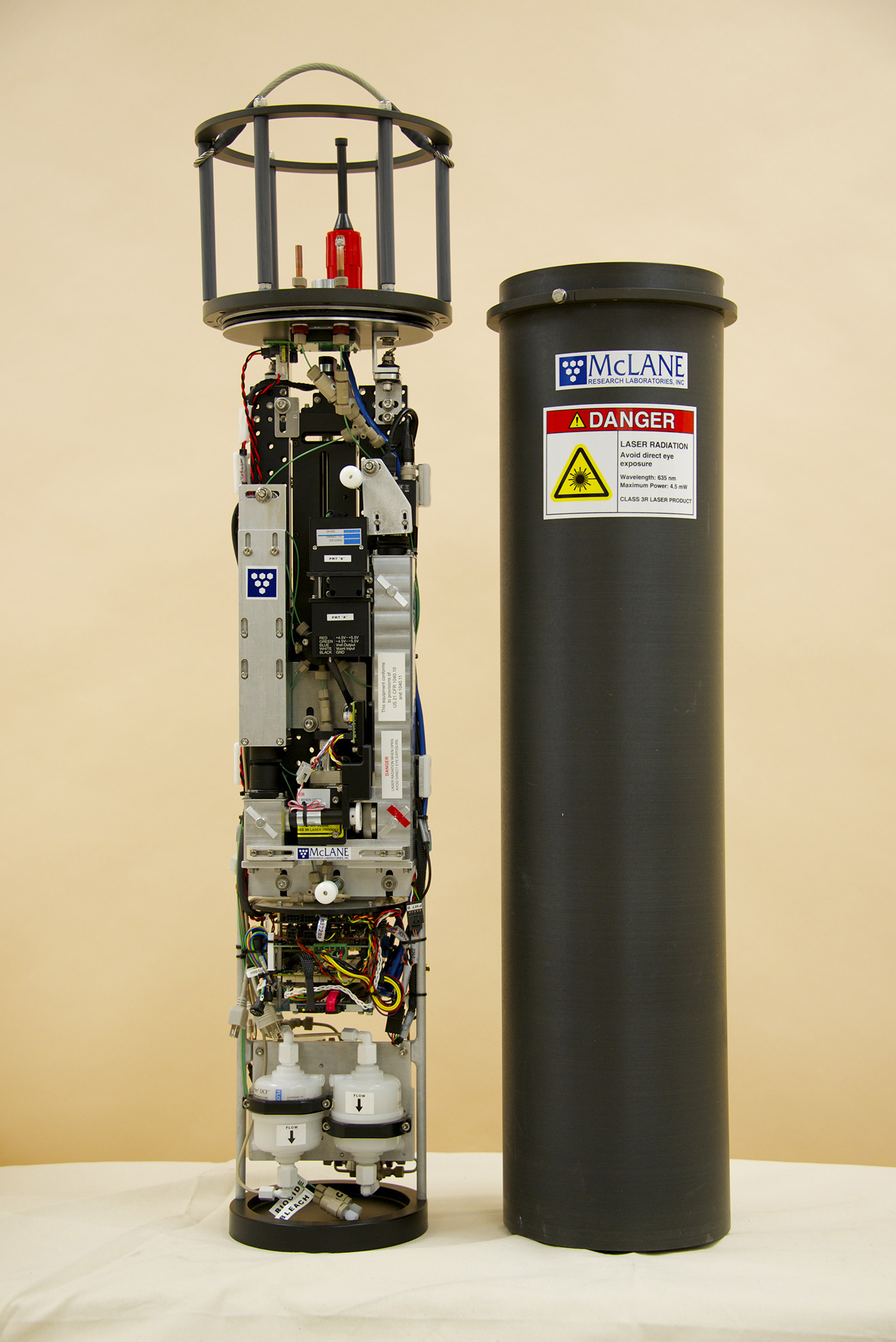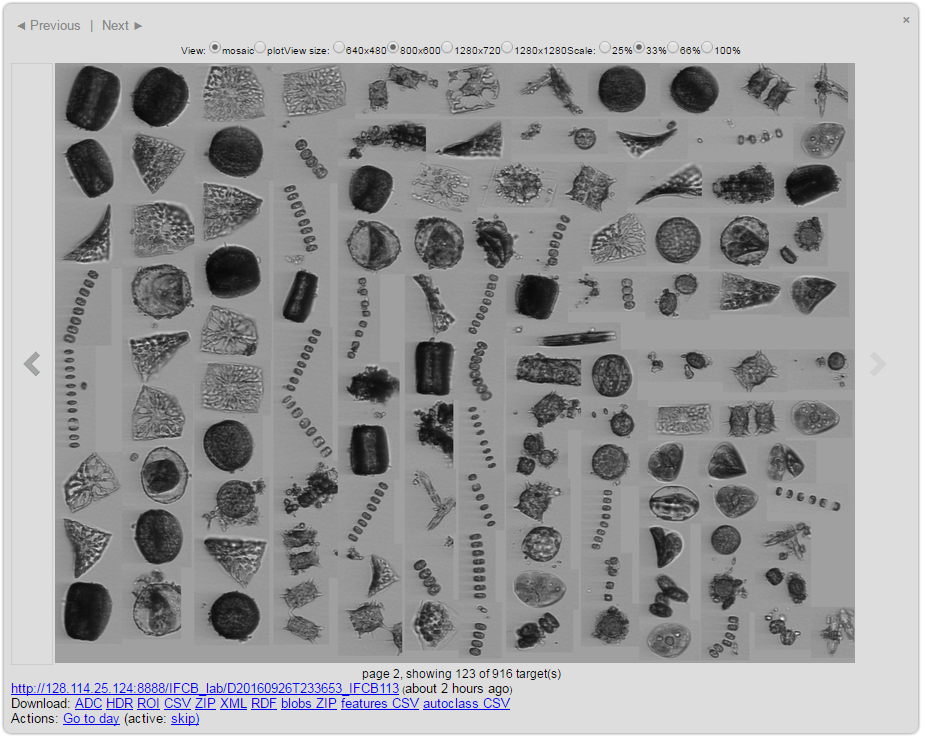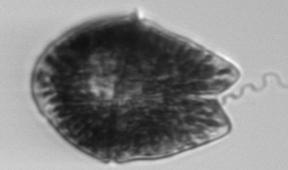 |
||||
Imaging FlowCytobot |
||||
 |
|
The Imaging FlowCytobot (IFCB) is an in-situ automated submersible flow cytometer that generates images of particles taken from the aquatic environment. The IFCB uses a combination of flow cytometric and video technology to capture high resolution images of suspended particles. The optical and image data are then transmitted to shore in real time. At left is an IFCB next to the pressure housing that protects it when deployed in the water.
|
||
As water travels through a thin tube into the IFCB, it passes through a laser beam. The laser causes living phytoplankton cells to fluoresce, which then triggers a camera. Each cell is photographed individually. The IFCB can sample 5ml of water every 20 minutes, and can generate up to 30,000 images per hour. |
 |
|||
 |
The IFCB is designed for autonomous operation, and can be deployed at sea for up to 6 months at a time. At left is a high-resolution image of a common red tide-forming dinoflagellate, Akashiwo. |
|||